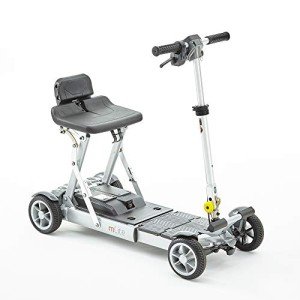Understanding Mobility Aids: Enhancing Independence and Quality of Life
As society continues to age and people increasingly seek ways to maintain self-reliance, the demand for mobility aids has never ever been more pertinent. Mobility aids, which encompass a series of devices developed to help people with strolling or walking around, play an essential function in promoting mobility, enhancing security, and enhancing total quality of life. Odessa Lisboa will explore the numerous kinds of mobility aids, their benefits, considerations for choice, and answer some often asked questions.
Types of Mobility Aids
Numerous mobility aids are readily available, each developed to deal with specific needs. The following table summarizes a few of the most common kinds of mobility aids and their functions.
| Type of Mobility Aid | Description | Best Suited For | Key Features |
|---|---|---|---|
| Canes | A portable stick offering assistance and balance. | Individuals who require very little support. | Light-weight, portable, adjustable height. |
| Walkers | Four-legged frames providing stability. | Those needing significant support while strolling. | Foldable, some with wheels, added safety features. |
| Rollators | Wheeled walkers with a seat for resting. | People needing mobility with the choice to rest. | Brakes, baskets for personal items, adjustable height. |
| Wheelchairs | Chairs with wheels for people with restricted mobility. | Those not able to stroll or needing comprehensive support. | Manual or powered choices, adjustable seating. |
| Scooters | Motorized devices for larger ranges. | Individuals with restricted stamina but needing self-reliance. | Different sizes and styles, frequently transportable. |
| Crutches | Support devices put under the arms or forearms. | Individuals recovering from lower limb injuries. | Adjustable, lightweight, needs upper body strength. |
| Stairlifts | Mechanical devices for moving between floorings. | Users facing challenges in multi-level homes. | Customizable for different staircases, automated. |
Advantages of Mobility Aids
Mobility aids supply an array of advantages that can substantially improve the lives of people dealing with mobility challenges. Some notable benefits include:
- Increased Independence: Mobility aids empower people to move easily without counting on others for support, therefore enhancing their self-confidence and self-esteem.
- Boosted Safety: Using mobility aids can lower the threat of falls and injuries, specifically for older adults or those with balance issues.
- Improved Quality of Life: By helping with mobility, individuals can participate in social activities, go to events, and enjoy life more fully, adding to much better psychological and mental health.
- Rehabilitation Support: After surgery or injury, mobility aids supply essential assistance and stability, assisting in recovery and rehab procedures.
- Ease of access: Many mobility aids are developed to be utilized both indoors and outdoors, guaranteeing that individuals can navigate various environments with ease.
Factors to Consider When Choosing Mobility Aids
Selecting the suitable mobility help needs cautious factor to consider of numerous factors, including:
| Factor | Considerations |
|---|---|
| User's Needs | Evaluate the level of mobility needed; consider whether the user needs short-term or long-term help. |
| Physical Limitations | Assess the user's strength, balance, and coordination to figure out the very best type of help. |
| Setting | Think about the primary environments where the help will be used, such as home, outdoors, or specific terrains. |
| Weight and Portability | Ensure that the picked device is workable regarding transportability and storage, specifically for outside usage. |
| Spending plan | Mobility aids come in a range of rates; think about insurance protection and offered financing choices. |
| Adjustability | Pick aids that can be changed for height and convenience to accommodate development or altering requirements. |
Frequently Asked Questions About Mobility Aids
1. How do I know if I need a mobility help?
Many aspects can signal the need for a mobility help, such as difficulty walking or balancing, tiredness while standing, or a recent surgery impacting mobility. Consulting with a healthcare expert can supply guidance tailored to specific requirements.
2. What kinds of mobility aids are covered by insurance?
Coverage varies between insurance providers, however most supply alternatives for long lasting medical devices, which usually includes wheelchairs, walkers, and some types of walking sticks. Consult your insurance supplier for specific coverage details.
3. Can mobility aids be utilized outdoors?
Yes, numerous modern-day mobility aids are developed for outside usage. Rollators, scooters, and some walkers are equipped with features for stability and ease of use on various surface.
4. How do I preserve my mobility help?
Regular upkeep includes checking for any wear and tear, guaranteeing that parts such as wheels, brakes, and frames are functioning correctly, and cleaning up the devices as required. Following the maker's standards is essential for security.
5. Is there a threat of becoming depending on mobility aids?
While some users might become reliant on mobility aids, they are developed to promote independence and mobility. Slowly using a mobility help can boost confidence and aid maintain physical strength and coordination.
Mobility aids are vital tools that empower individuals to conquer physical obstacles, promoting self-reliance and enhancing lifestyle. By comprehending the numerous types of mobility aids available, their benefits, and crucial aspects for factor to consider, families and caregivers can make educated choices that best satisfy the requirements of their loved ones. With the right assistance, those with mobility challenges can lead satisfying and active lives, free to explore the world around them.

